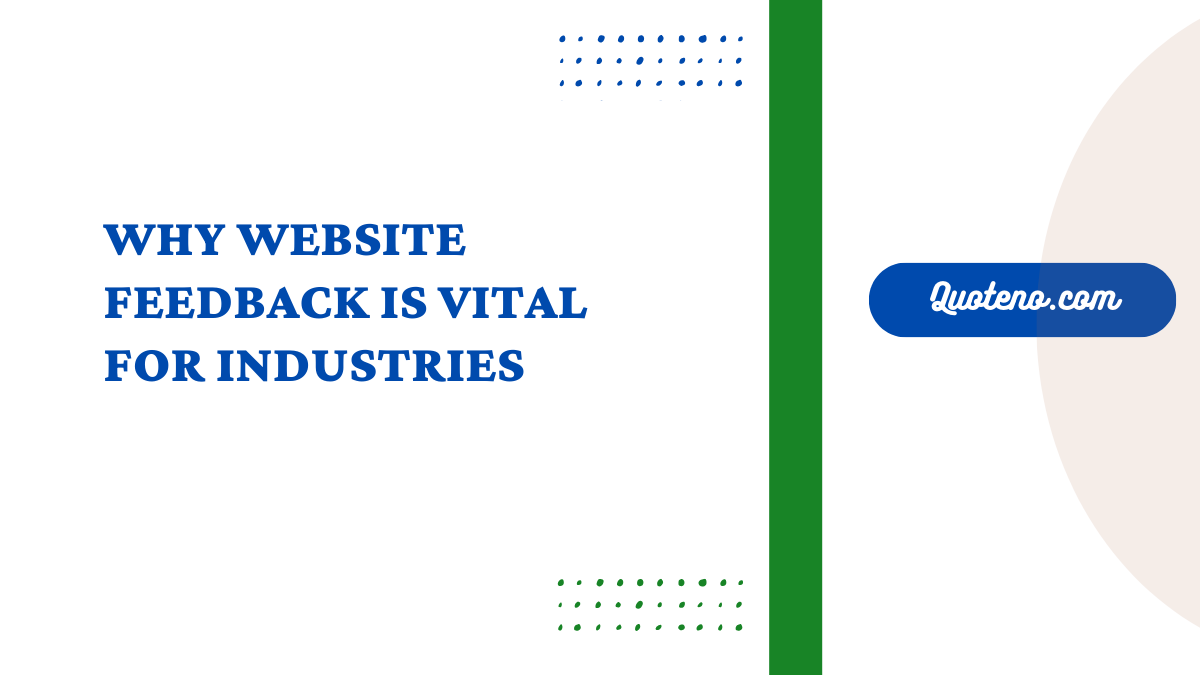Website feedback is crucial to helping businesses improve their products and services. It provides a unique insight into the customer experience, resulting in better user experiences, higher conversion rates, repeat customers, and strong brand loyalty. Explore below the key reasons why website feedback is vital for industries.
Table of Contents
Customer Retention
The customer retention rate is one of the most important metrics for businesses in almost every industry. A business with a high customer retention rate will likely see continued growth and profits, but many factors can impact it. One key factor is gathering insights into what motivates loyal customers. By prioritizing website feedback, businesses can gain the understanding they need to keep their customers for life.
Keeping existing customers is also much more cost-efficient than acquiring new ones. This is why companies with a high customer retention rate generate 4–8% more revenue than those with low customer satisfaction rates. One way to improve customer retention is by quickly and professionally solving any issues.
For example, if you have a problem with a purchase button or a coupon code that needs to be fixed, it can deter customers from making a purchase and lead them to your competitors.
Site feedback surveys are a great tool to gather the necessary information to resolve these issues. They can be deployed as pop-ups, on-page surveys, or feedback widgets to capture the data you need from your visitors conveniently.
These tools can help you understand what content is most valuable to your customers by asking them how satisfied they are with it. They can also be used to collect feedback about specific features or pages to test and optimize them for conversions.
Customer Satisfaction
Website feedback tools, like on-page surveys or feedback widgets, can be triggered by a user action to collect visitor and customer satisfaction data. This allows you to understand what the experience is like for users on your site and take the necessary steps to fix problems that may be causing them to leave.
For example, if customers leave your site with a cart full of items but no purchase, this is usually a sign of a problem with the product or the checkout process. Addressing these issues as quickly as possible is essential to keeping them happy and preventing any negative word of mouth from spreading.
This can be done by triggering a survey with an exit intent question or adding a free-text question to your post-purchase page. It can also be done using a session replay tool to understand the user journey and identify navigation issues or errors. Lastly, website feedback tools can collect online reviews and ratings to show potential customers what others think of your products and services.
Product Development
Businesses need customer feedback to assess whether those changes are effective when they make website changes. Website feedback tools can survey visitors and customers on various aspects of a website, including its ease of use, navigation, and performance. In addition to assessing the effectiveness of site updates, website feedback can help companies improve their products and services through various methods.
For example, online review and rating tools allow users to share their thoughts on products and services and give them a score based on their performance. Website feedback can also collect feature requests, prioritize them, and communicate with customers through a changelog.
One of the biggest benefits of website feedback is that it can be collected in real-time, allowing companies to address issues quickly and efficiently. This can be especially helpful in a customer-facing industry like retail or hospitality, where problems that are not addressed can significantly impact business revenue and retention.
Another benefit of website feedback is that it can be targeted at specific groups of customers and visitors. For instance, a post-purchase website feedback survey can be triggered on the checkout page and targeted to visitors who have recently completed a purchase. This allows companies to capture unbiased and reliable data that can be used for product development.
Reputation Management
Website feedback tools allow you to gather data usually unavailable via regular web analytics packages, such as mouse and click behavior. They typically work by requesting feedback through an online form from the visitor.
They are often recognized by their feedback button on the website or by a (short) feedback form that pops up after some specific user action, such as cart abandonment, leaving comments, or entering the competition.
Website-based feedback tools are a great way to determine if your website meets customers’ expectations and if any usability issues need to be spotted. These tools can also be used to conduct live testing with a small sample of visitors to the test website and examine prototypes of pages and product features before they go live.
The tools offer a range of possibilities, including feedback forums, a helpdesk, and chat functionality. Most tools also support adding a review widget to your website for visitors to leave feedback, which can be displayed as ratings and reviews on external platforms. Some tools provide a dashboard to extract and analyze the results easily.
This enables you to act quickly on the customer data that has been collected and to ensure that any problems with your site are being addressed.
- The Art of Choosing Door Locks for Enhanced Security and Style - October 16, 2024
- Finding the Best eSIM Options for International Students Moving To The US: An In-Depth Review - October 16, 2024
- Simple Ways to Enhance Community Support Through Charitable Donations - September 26, 2024

